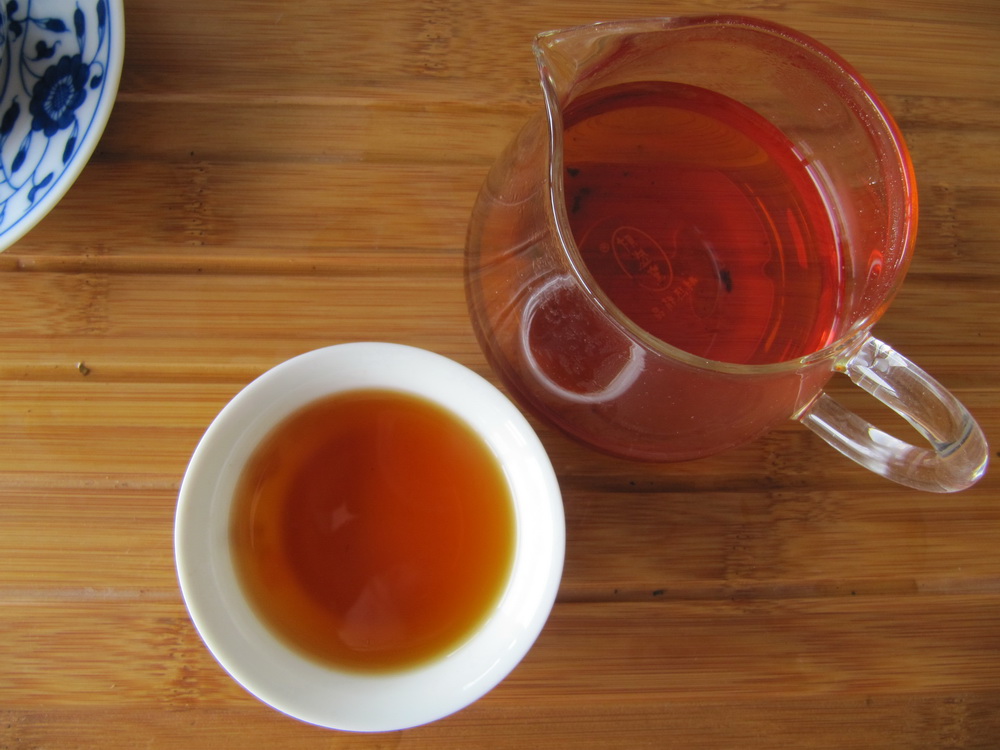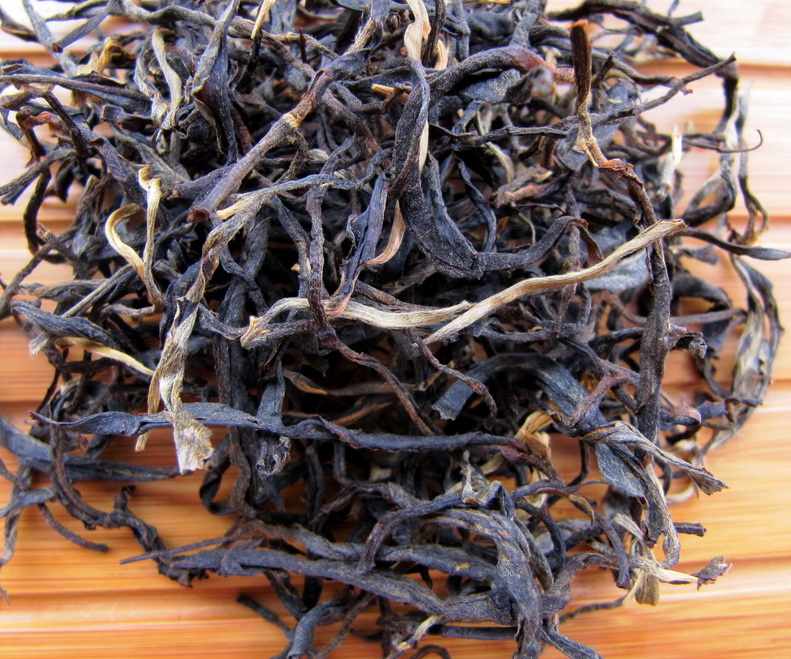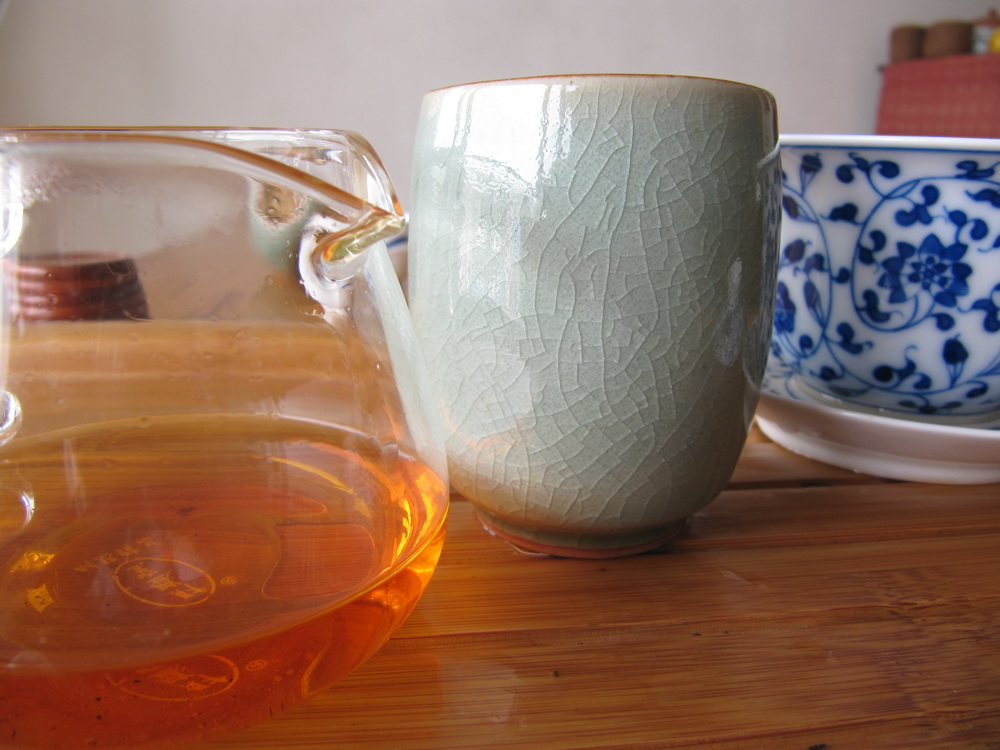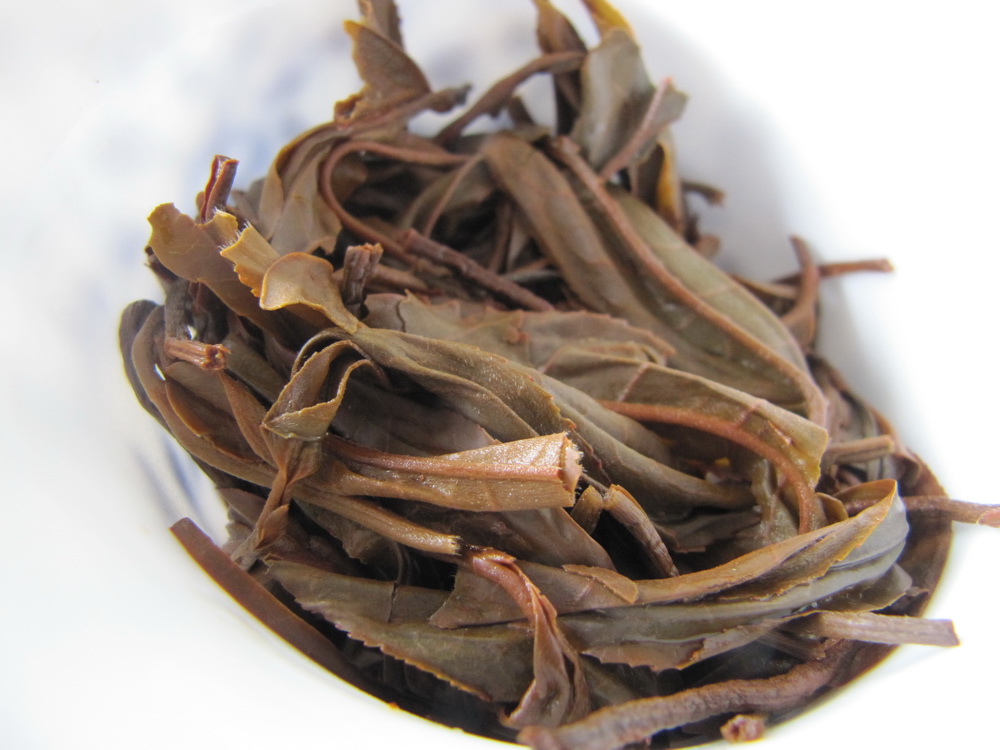I was in Nan Nuo Shan yesterday where a friend of mine gave me some da shu black tea to try.
Nan Nuo Shan has a history of tea making. When Nan Nuo Shan Tea Factory was set up in the late 1930’s, it produced black and green tea, and in its heyday was producing hundreds of tonnes of tea a year, mostly for export. Although they planted large areas of tea trees, initially they made black tea from the old tea trees on the mountain which was, by all accounts, very good.
Fu Hai tea factory was set up later, also in Nan Nuo Shan. My friend worked there as a young man and learned the skills of tea making. He later was employed to teach new apprentices and was one of the first farmers in recent history in Nan Nuo Shan to start making his own tea: prior to that, the custom was for farmers to pick tea and then take the fresh leaves to the factory. Because of this, many farmers at that time had limited experience of making their own tea.
But making black tea is becoming quite popular in Nan Nuo Shan. My friend had made a couple of different batches. One we drank at his home, the other I tasted in Jinghong.
It’s not the most beautiful Dian Hong – as Dan San says, there would be more tips in bush tea, but the leaves are impressive. Most people making tea in Nan Nuo Shan ferment it quite lightly. This is a little more heavily fermented. The dry leaves are still quite fragrant, but the flavour is deeper, stronger, more full bodied than typical Nan Nuo black tea.
It’s got what I think of as that kind of peppery sweetness which seems to typify Yunnan Dian Hong. Some hints of caramel and spices whose names don’t come to mind. The flavour is quite robust and has both some bitterness and a little astringence. The broth has that classic bright, golden – orange colour, but deepens somewhat on later steepings.
I was expecting this tea to be slightly more fragrant than the one we tasted in Nan Nuo Shan, but it was not obviously so. Muted, elusive, perhaps some hint of flowers, so it’s sweetness is the thing that stays with you – lasting for quite some time.
The leaves after a few steepings. As one can see, this is still not very heavily oxidised. The leaves are still very much intact and a testimony to the trees they came from.
 After steeping for several minutes, the broth darkened somewhat. It has nice clarity and lustre.
After steeping for several minutes, the broth darkened somewhat. It has nice clarity and lustre.
By the way, the small beaker above is Thai celadon, made in Chiang Mai using an ash glaze. They specialise in tableware and produce this quite ‘costaud’ style which feels very comfortable in the hand and is pleasant to drink from.



